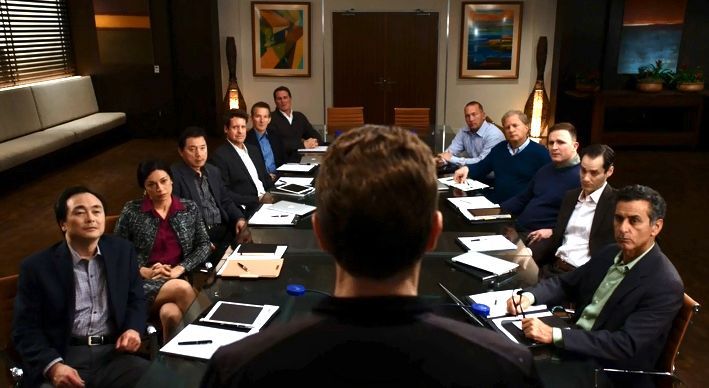One of our favorite partners here at Foundersuite is a super high energy guy named Iddo Tal. He runs an online bootcamp called Raise the Round where he teaches founders his step-by-step methods for everything from creating traction pre-launch to market differentiation to structuring a deal with co-founders.
I interviewed Iddo on our How I Raised It podcast, and the tips he delivered were solid gold. He outlined his seven-step method for managing investor meetings, including actionable tips for effectively following up. Here's a recap. Please read.
A 7-step method for running killer investor meetings
When Iddo began pitching investors in Silicon Valley, it took time for him to understand the dynamic at work in those meetings and to adjust his methods accordingly.
“Would you enjoy being in a meeting, day after day — that’s what investors are doing — with people trying to hard sell you the entire time?” he asks, noting that investors often schedule up to eight meetings per day.
He remembers trying to hard sell the room for the full hour long meeting and watching as investors’ shoulders tensed.
“I was trying to teach investors every bit of information I knew about the market and the business,” he says, “and this is such an ineffective method.”
Over time, he created a framework that changes the dynamic completely. It works so well, he says, that even if the investor is not a good fit for your startup, they will eagerly introduce to you their contacts.
1. Open with 2-3 minutes of small talk
Begin the meeting with a few minutes to chitchat to create rapport. Let the investors talk about something that interests them, or look for a common interest between you.
If you’re pitching on a Zoom call, take a look at what’s in the investor’s background — a diploma, a photo, a trinket — and ask them about it.
2. Frame what will happen during the meeting
Before you get into your pitch, lay out for everyone in the room what they can expect from the meeting. This shows investors that you are organized and prepared, and it keeps you from rambling.
Iddo recommends your framing sound something like this:
Hey, [investor], thank you so much for inviting me here. I believe we have an hour, right? So how about we do the following:
For five minutes I’ll give you my pitch with the deck. After the five minutes, we’ll take the biggest part of the meeting — about 30 minutes — for your Q&A. And then I’d like to spend 10 minutes asking you questions. In the last 10 minutes, we’ll define the next steps together. How does that sound?
“I haven’t met an investor who has said no to that,” Iddo says. “I see their shoulders relax. They know that they have five minutes that they need to be quiet, and after that, this is their show to ask questions.”
Pro tip: Revisit your framework between each of the following steps — Iddo calls this “micoframing” — reminding the investors of what is coming next and confirming that they are ready to move to the next portion of the meeting.
3. Give a 5-minute pitch presentation
Practice giving your full pitch in five minutes. Iddo suggests preparing no more than 12 slides and making sure they include all of the important elements. In addition to what you actually say about your company, how you say it will communicate your organized approach to the investors in the room.
Read more: The 6 Most Powerful Pitch Deck Frameworks to Rock Your Investor Presentation
4. Use the Q&A to invite investors to think out loud
The aim of this 30-minute segment of the meeting is to let the investors use questions to process their own thoughts about your pitch. Often one question will lead to an idea that will spin off another idea.
“This is where the magic happens,” Iddo says. “In a good meeting with investors, the investors start to sell you on what we can do together.”
The key to making this work? Be quiet! Answer their questions directly and concisely, and allow your answers to enable their thought process.
Iddo offers the example of investors asking about burn rate.
“Many times this was just for me to say $60k,” he says.
The temptation, however, is to begin explaining why the burn rate is $60k. Offering an explanation the investors didn’t ask for quickly kills the whole dynamic. If you feel that an explanation would be helpful, ask permission to share it before you dive in — something like, “Would you like to hear the breakdown of the burn rate?”
Iddo says only answering exactly what is asked takes a lot of intentional practice.
“My method is that I visualize a big pile of $1 bills,” he says, “and every word I’m saying is a $1, and I have a limited amount of bills.”
Pro tip: Iddo likes to have one question where he can respond with an I don’t know — he’ll even invent it on the spot. Sometimes this opens an opportunity to play with a financial model or to include investors into a mini creative working session where you can demonstrate what it’s like to work with you as a founder.
5. Ask these 7 questions to get closer to a close
Take 10 minutes to flip the Q&A so you can ask questions of the investors.
Here are seven questions to ask investors at this point in the meeting:
- Who makes the decision to invest?
- What is the average amount you invest in a startup? What’s your sweet spot?
- Is there anyone else you would like me to meet? This is a great question to assess how investors are feeling — you’ll know the difference between No, I’m excited about this deal and I make the decisions and No, there isn’t. (Hint: The latter is not a great sign.)
- If — and only if — you sense from their answers that they are excited but not decided, ask: Would you be interested in meeting our team or seeing our offices?
- Do you feel comfortable investing in SAFE notes?
- Are you aware that we are incorporated in Canada/Singapore/Delaware/etc.?
- Is there a timeframe for when you typically invest in deals? You will be surprised by the answers!
Pro tip: Ask these questions in addition to doing your own homework. You should walk into the meeting knowing what stage the investor works in and who they’ve invested in previously. It’s also helpful to talk to other founders they’ve worked with.
6. Define the next steps
Before you enter this final stage of the meeting, take one last moment to microframe, which could sound like:
“Thank you for answering my questions. I know I asked a lot, but your answers were very helpful. Now that I have the complete picture, the last step is to take about 10 minutes to define the next steps. Are you ready to dive in?”
Base your next steps on the answers you heard during your Q&A. For example:
It sounds like I need to meet with Rachel on your team for due diligence. I have a full data room ready to go — would you like me to send that along with our session notes?
or,
I understand that your investment sweet spot is around $200,000. Is that a fair amount for our deal?
At the end of the meeting, be sure to thank the investors — then it’s time for follow-up.
7. Follow up on the same day
Iddo advises following up on a pitch meeting the very same day. In fact, he has been known to walk out of a meeting, open the hotspot on his phone and send follow-up materials from the investors’ parking lot.
“I am a machine at fundraising,” he says. “If you blink you’re going to lose, and that’s the energy you want to reflect.”
Your follow-up email should include anything you agreed to in the next steps — access to your data room, materials you discussed, the answer to your I don’t know question. And if investors indicated they are ready to write a check, you can also include a pre-signed SAFE note.
Iddo puts a deadline on the note for the timeline agreed upon in the meeting plus a buffer of three days, and he sends it pre-signed, making it as easy as possible for the investor to sign off.
He recommends using an e-signature program like HelloSign to automate the process, send daily reminder emails and show whether the investor has opened the note. If a few days go by with no activity, Iddo knows it’s time to reach out to the investor and offer support.
It’s crucial to stay on top of the follow-up process.
“I used to get out of meetings saying, that was a great meeting,” Iddo says. “And people said, OK, what’s the next step? And I said, I’m waiting for the investor to get back to me. That’s a failure. That’s a bad meeting.”
Bonus tips (or how to not drop the ball)
Momentum is the oxygen that fuels the fire of fundraising — without it, deals sputter and die. One way to keep the momentum going is to make fundraising your #1 priority in life.
No matter what you may be doing, Iddo says, “When you get an email from investors, drop everything and answer the email. … This is not the time to drop balls.”
Another word of wisdom: “Run fast,” Iddo says. Create a huge pipeline, an abundance of investors, a full calendar of potential meetings.
“You are a machine,” Iddo says. “You have to create more and more and more opportunities with investors in your space, in your stage, that are great people to work with. And you need to run fast to keep the momentum.”
Nathan Beckord is the CEO of Foundersuite.com which makes software for raising capital. Foundersuite has helped entrepreneurs raise over $3 billion in seed and venture capital since 2016. This article is based on an episode of Foundersuite’s How I Raised It podcast, a behind-the-scenes look at how startup founders raise money.


